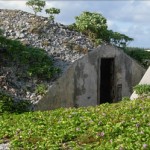Shelter
 The EF5 tornado that swept across Moore, Oklahoma, on Monday, May 20, left a trail of utter devastation in its wake. Quick to form and quick (relatively speaking) to dissipate, a tornado is the essence of unpredictability and violence. Recovery operations began immediately in Moore, focused on the rubble that minutes earlier had been an elementary school. As the initial shock gave way to grim purpose, a troubling question arose: why was there no storm shelter here? In hindsight, it is easy to agree that there are certain places and times where prudence dictates preparation for protection from weather and war.
The EF5 tornado that swept across Moore, Oklahoma, on Monday, May 20, left a trail of utter devastation in its wake. Quick to form and quick (relatively speaking) to dissipate, a tornado is the essence of unpredictability and violence. Recovery operations began immediately in Moore, focused on the rubble that minutes earlier had been an elementary school. As the initial shock gave way to grim purpose, a troubling question arose: why was there no storm shelter here? In hindsight, it is easy to agree that there are certain places and times where prudence dictates preparation for protection from weather and war.
The same question loomed as I researched the historical background for Building for War. The construction of naval air bases and facilities at Wake Island, Midway, and half a dozen other strategic Pacific locations was predicated on war with Japan. It was not a matter of if, but when. As the months of 1941 raced by, relations with Japan deteriorated and the likelihood of imminent war increased. The navy pressed for speedy construction on the outlying islands (though, as my book demonstrates, it undermined its own imperative with lengthy delays in plans and approvals).
The reality of imminent war in the Pacific, however, did not stimulate a need for reasonable and prudent defenses: construction of bomb shelters remained a low-priority item. On the high priority side were the reinforced concrete magazines for ammunition and high explosives. In late September 1941 the navy finally released plans for a four-hundred person bomb shelter on Wake (where over a thousand civilian contractors worked). Materials were ordered immediately, but only a small portion had even arrived in Honolulu by early December. The bomb shelter on Wake was never even started. (Building for War, 149)
The region of Oklahoma where the tornado struck on May 20 is “ideally” situated for the formation of destructive weather patterns. Indeed, devastating tornadoes had swept over the small town of Moore twice before in the last fourteen years. The most powerful winds ever clocked were recorded there in 1999. The geographical conditions required for tornado formation are there: throw in timing, humidity and wind shear, and bad luck and it is not a matter of if, but when. Unfortunately, geographical conditions for underground storm shelters or even basements are not there, given the porous quality of the soil. Construction of above ground “safe rooms,” concrete structures built to FEMA standards, is hampered by the high cost. For large public structures the budget item is enormous and school budgets are always contentious. There was no safe room in Plaza Towers Elementary School on Monday when the tornado struck, but early warning got many out of the storm’s path or into sufficient shelter elsewhere, and those who remained literally hung on for dear life.
Safe shelter should not have to be a budget item subject to cost priorities. Shelter is one of our basic human needs, but when it reaches into the “emergency” category, it is saddled with risk. Early in my book project, my working title for the book was Relative Risk. It encompassed the risks of distance and danger that the civilian contractors took signing on for a job far out in the Pacific, as well as the family risk (plus it had a nice alliterative ring). I believe that the phrase is used in modern medical and insurance fields for weighing a person’s potential for developing cancer. We weigh risks all the time in life, but there is always uncertainty: the luck factor. Humans love to bet on good luck, but are reluctant to bet on bad luck. Perhaps that is why budget items like safe rooms and bomb shelters fall into low priority categories when the winds are calm and the horizon empty. Only in hindsight do we cry: “woulda coulda shoulda!”

